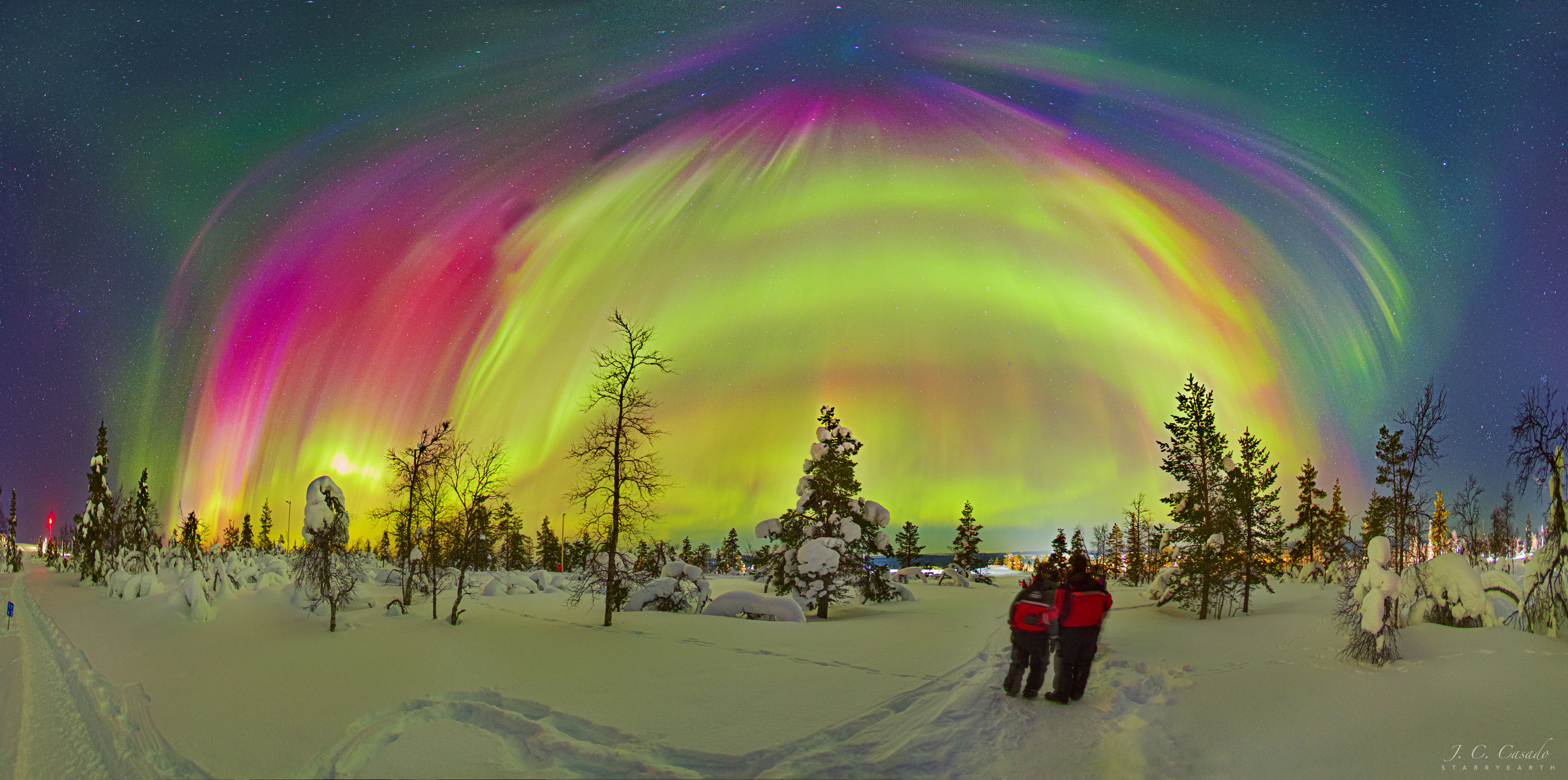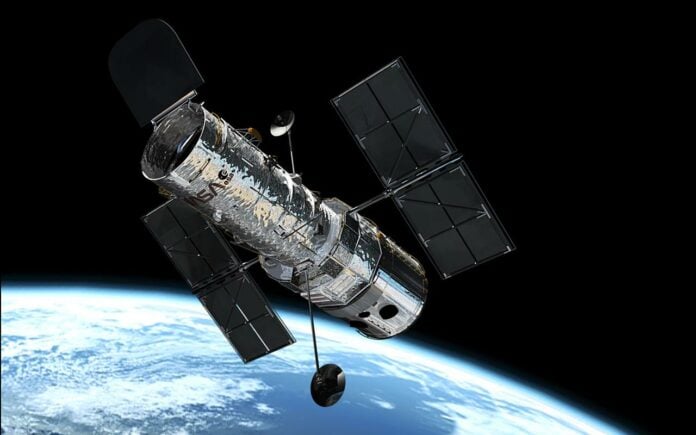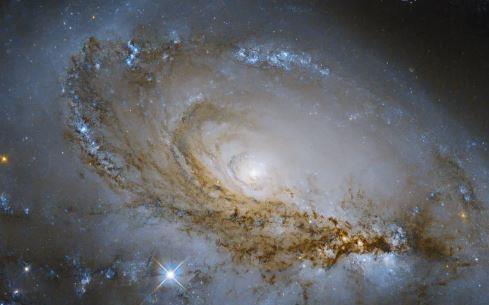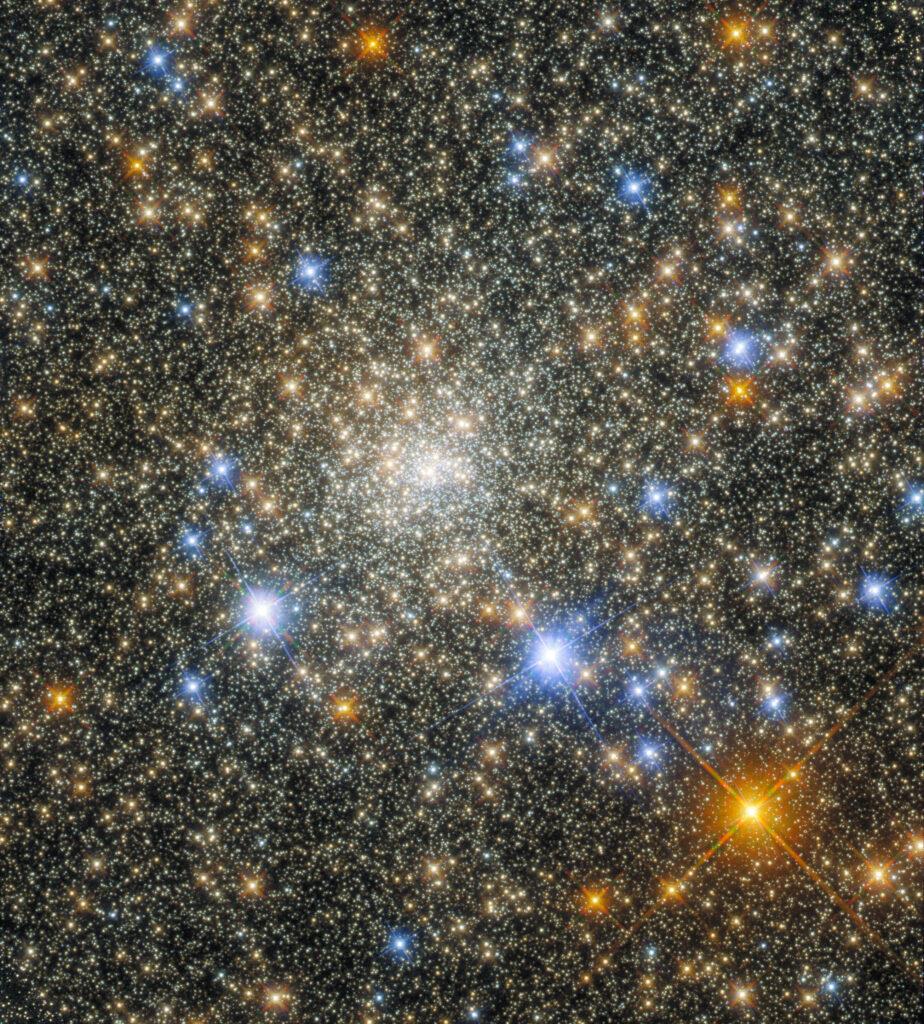| eyez | ||
|---|---|---|

| Absolute zero is one end off the scale but there is no end to the other, Don't get me started on light | |
Like 6 | ||
| Post liked by - Superbikemike | ||
| Jase1 | ||
|---|---|---|

| SpaceX Starship, world's biggest rocket, set for first test flight  The giant rocket is scheduled to blast off from Starbase, the SpaceX spaceport in Boca Chica, Texas, at 8:00 am Central Time (1300 GMT). Fallback times are scheduled for later in the week if Monday's launch attempt is delayed -- something billionaire SpaceX founder Elon Musk said is a distinct possibility. "It's a very risky flight," Musk said in a live event on Twitter Spaces on Sunday. "It's the first launch of a very complicated, gigantic rocket. "There's a million ways this rocket could fail," he added. "We're going to be very careful and if we see anything that gives us concern, we'll postpone." Musk said he wanted to "set expectations low" because "probably tomorrow will not be successful -- if by successful one means reaching orbit."  Starship consists of a 164-foot (50-meter) tall spacecraft designed to carry crew and cargo that sits atop a 230-foot tall first-stage Super Heavy booster rocket. Collectively referred to as Starship, the spacecraft and the Super Heavy rocket have never flown in combination together, although there have been several sub-orbital test flights of the spacecraft alone. If all goes according to plan, the Super Heavy booster will separate from Starship about three minutes after launch and splash down in the Gulf of Mexico. Starship, which has six engines of its own, will continue to an altitude of nearly 150 miles, completing a near-circle of the Earth before splashing down in the Pacific Ocean about 90 minutes after launch. "If it gets to orbit, that's a massive success," Musk said. "If we get far enough away from the launchpad before something goes wrong then I think I would consider that to be a success," he said. "Just don't blow up the launchpad. "The payload for this mission is information," he said. "Information that allows us to improve the design of future Starship builds."  The Super Heavy booster was anchored to the ground during the test-firing, called a static fire, to prevent it from lifting off. NASA will take astronauts to lunar orbit itself in November 2024 using its own heavy rocket called the Space Launch System (SLS), which has been in development for more than a decade. Starship is both bigger and more powerful than SLS. It generates 17 million pounds of thrust, more than twice that of the Saturn V rockets used to send Apollo astronauts to the Moon.  Musk said the goal is to make Starship reusable and bring down the price to a few million dollars per flight. "In the long run -- long run meaning, I don't know, two or three years -- we should achieve full and rapid reusability," he said. The eventual objective is to establish bases on the Moon and Mars and put humans on the "path to being a multi-planet civilization," Musk said. "We are at this brief moment in civilization where it is possible to become a multi-planet species," he said. "That's our goal. I think we've got a chance." | |
Like 5 | ||
| Post liked by - Superbikemike | ||
| Jase1 | ||
|---|---|---|

|  NASA released wild footage of Mars helicopter flying over an alien desert BY MARK KAUFMAN April 15, 2023 NASA is regularly flying a robotic helicopter around Mars while a car-sized rover below zaps rocks with a laser as it searches for potential signs of past life. The space agency recently celebrated the Ingenuity helicopter's whopping 50th flight over the Martian desert, as it flew well over 1,000 feet and reached an altitude of nearly 60 feet. "Just as the Wright brothers continued their experiments well after that momentous day at Kitty Hawk in 1903, the Ingenuity team continues to pursue and learn from the flight operations of the first aircraft on another world," Lori Glaze, director of NASA's Planetary Science Division, said in a statement. While announcing the landmark flight, NASA also included recent footage of Ingenuity's 47th flight, which you can watch below. NASA's Perseverance rover filmed this clip from almost 400 feet away. "This video shows the dust initially kicked up by the helicopter's spinning rotors, as well as Ingenuity taking off, hovering, and beginning its 1,444-foot (440-meter) journey to the southwest," the space agency explained. "The rotorcraft landed — off camera — at Airfield 'Iota.'"  Credit: NASA / JPL-Caltech / ASU / MSSS Folks, this might not be an epic Schwarzenegger action scene, but it is wild. Before 2021, humanity had never flown a powered aircraft on another planet. Now the Ingenuity helicopter, an experimental robot, has vastly exceeded engineers' expectations. NASA hoped to prove it could fly something on Mars. But the helicopter has flown 50 flights, with many more planned. And we can watch it zooming over another planet's rocky, red desert. The successful helicopter, with rotors reaching four feet long from tip to tip, has also proven that NASA can build aerial "scouts" for future extraterrestrial endeavors. "Every time Ingenuity goes airborne, it covers new ground and offers a perspective no previous planetary mission could achieve," NASA said. The chopper's extraterrestrial journey, however, is growing more perilous. The robot is venturing through Mars' Jezero Crater, a place that once hosted a rich river delta — an environment that could have hosted Martian life, if any ever existed, that is. But the terrain is no longer flat. NASA engineers are guiding Ingenuity through an area with "dunes, boulders, and rocks, and surrounded by hills that could have us for lunch," explained Josh Anderson, NASA's Ingenuity operations lead. "We are not in Martian Kansas anymore," he said. | |
Like 5 | ||
| Post liked by - ROBBREDD | ||
| Soup | ||
|---|---|---|

| Primordial black holes may have 'frozen' the early universe by Paul M. Sutter, Universe Today  Artist's logarithmic scale conception of the observable universe with the Solar System at the center, inner and outer planets, Kuiper belt, Oort cloud, Alpha Centauri, Perseus Arm, Milky Way galaxy, Andromeda galaxy, nearby galaxies, Cosmic Web, Cosmic microwave radiation and the Big Bang's invisible plasma on the edge. Credit: Wikipedia Commons/Pablo Carlos Budassi Primordial holes formed in the exotic conditions of the big bang may have become their own source of matter and radiation. The standard story of the early universe goes like this. When our cosmos was incredibly young, it underwent a period of incredibly rapid expansion known as inflation. Then inflation went away and flooded the universe with particles and radiation in the hot big bang. Then the universe expanded and cooled, and as it did so the density of that matter and radiation dropped. Eventually the matter got itself together informed stars, galaxies and clusters. But new research, now published on the arXiv preprint server, suggests that this simple story may be missing a key ingredient: primordial black holes. Currently we know of only one guaranteed way to create black holes. That's through the deaths of massive stars. When they collapse in on themselves at the end of their lives, they reach high enough densities to overwhelm every other force and trigger the formation of a black hole. But the early universe may have been exotic enough to make black holes in its own way. When inflation ended and the universe began to cool off, it was not a smooth and gentle process. Instead it was incredibly violent, with massive shifts in energy and mass from place to place. It's possible that pockets of the universe may have spontaneously reached high enough densities to form black holes directly on their own, without having to go through the formation of stars first. These are the so-called primordial black holes. Cosmological observations already placed severe limits on the number of primordial black holes that could inhabit the early universe. But there is still room for them to exist. And a team of researchers have put together a paper exploring an unexpected consequence of the formation of these primordial black holes. We know from the work of Stephen Hawking that black holes are not entirely black. They actually glow a little bit through an exotic quantum process known as Hawking radiation. For normal-sized black holes this is a very inefficient process. A typical black hole will only emit one particle of radiation every year or so. But smaller black holes emit much more radiation. If the primordial black holes were small enough, then they would evaporate completely while the universe was still in its infant stages, leaving no trace of their existence behind. But the researchers found that this leads to a curious situation. As these primordial black holes evaporated they released their own floods of radiation and matter. Despite the expansion of the universe, if enough primordial black holes evaporated then the density of matter and radiation could stay constant. This would lead to a an extended black hole-based big bang scenario. Eventually all the primordial black holes would go away and the rest of cosmological history would go on without them. But they would leave their mark. The changes in matter and radiation density can potentially have long-lasting impacts that we could detect even to the present day. And the evaporation of primordial black holes themselves trigger the formation of gravitational waves, which might linger still today. We may not ever find direct evidence for primordial black holes, but the researchers have found that we may find their subtle fingerprints throughout the universe. | |
Like 8 | ||
| Post liked by - bigboy12 | ||
| Beowulf | ||
|---|---|---|

|  The barred spiral galaxy UGC 678 takes centre stage in this image from the NASA/ESA Hubble Space Telescope. The spectacular galaxy lies around 260 million light-years from Earth in the constellation Pisces and is almost face on, allowing its lazily winding spiral arms to stretch across this image. In the foreground, a smaller edge-on galaxy seems to bisect the upper portion of UGC 678.  Just like humans, stars have a natural lifecycle; they are born, grow up, and eventually grow old and die. Studying this stellar life cycle — usually referred to as stellar evolution — is an important topic for astronomers. The ends of star lives can be marked by truly spectacular events, including titanic supernova explosions, the creation of unimaginably dense neutron stars, and even the birth of black holes. UGC 678 was recently found to be host to one of these events; in 2020 a robotic telescope scanning the night sky in search of dangerous asteroids discovered evidence of an enormous supernova explosion in the galaxy.  Two separate Hubble observations turned to UGC 678 to scour the galaxy in search of the aftermath of its supernova explosion. One team of astronomers used Hubble’s Advanced Camera for Surveys, and the other the Wide Field Camera 3, but both aimed to explore UGC 678 in the hope of unearthing clues to the identity of the star that produced the 2020 supernova.  Image Description: A large spiral galaxy. It has many narrow arms that are tightly-twisted in the centre, but at the ends they point out in different directions. The galaxy’s core glows brightly, while its disc is mostly faint, but with bright blue spots throughout the arms. A few smaller spiral galaxies at varying angles are visible in front, and it is surrounded by other tiny stars and galaxies, on a black background.  Credit: ESA/Hubble & NASA, C. Kilpatrick, R. J. Foley & Beowulf  | |
Like 8 | ||
| Post liked by - bigboy12 | ||
| panosol | ||
|---|---|---|

|  On some nights the sky is the best show in town. On this night, auroras ruled the sky, and the geomagnetic storm that created this colorful sky show originated from an increasingly active Sun. Surprisingly, since the approaching solar CME the day before had missed the Earth, it was not expected that this storm would create auroras. In the foreground, two happily surprised aurora hunters contemplate the amazing and rapidly changing sky. Regardless of forecasts, though, auroras were reported in the night skies of Earth not only in the far north, but as far south as New Mexico, USA. As captured in a wide-angle image above Saariselkä in northern Finnish Lapland, a bright aurora was visible with an unusually high degree of detail, range of colors, and breadth across the sky. The vivid yellow, green, red and purple auroral colors are caused by oxygen and nitrogen atoms high in Earth's atmosphere reacting to incoming electrons. | |
Like 7 | ||
| Post liked by - bigboy12 | ||
| Beowulf | ||
|---|---|---|

|  This dramatic image from the NASA/ESA Hubble Space Telescope shows the planetary nebula NGC 3918, a brilliant cloud of colourful gas in the constellation of Centaurus, around 4900 light-years from Earth.  In the centre of the cloud of gas, and completely dwarfed by the nebula, are the dying remnants of a red giant. During the final convulsive phase in the evolution of these stars, huge clouds of gas are ejected from the surface of the star before it emerges from its cocoon as a white dwarf. The intense ultraviolet radiation from the tiny remnant star then causes the surrounding gas to glow like a fluorescent sign. These extraordinary and colourful planetary nebulae are among the most dramatic sights in the night sky, and often have strange and irregular shapes, which are not yet fully explained.  NGC 3918’s distinctive eye-like shape, with a bright inner shell of gas and a more diffuse outer shell that extends far from the nebula looks as if it could be the result of two separate ejections of gas. But this is in fact not the case: studies of the object suggest that they were formed at the same time, but are being blown from the star at different speeds. The powerful jets of gas emerging from the ends of the large structure are estimated to be shooting away from the star at speeds of up to 350 000 kilometres per hour.  By the standards of astronomical phenomena, planetary nebulae like NGC 3918 are very short-lived, with a lifespan of just a few tens of thousands of years.  The image is a composite of visible and near-infrared snapshots taken with Hubble’s Wide Field Planetary Camera 2. The filters used were F658N, F814W, F555W and F502N, seen in red, orange, green and blue respectively. The image is about 20 arcseconds across.  Credit: ESA/Hubble and NASA & Beowulf  | |
Like 8 | ||
| Post liked by - bigboy12 | ||
| Jase1 | ||
|---|---|---|

|  barred spiral galaxy, a common type of spiral galaxy with a bar-shaped structure of stars in its center. This galaxy exists 214 million light-years away in the constellation Delphinus. Scientists used NASA’s Hubble Space Telescope to image NGC 6956 to study its Cepheid variable stars, which are stars that brighten and dim at regular periods. Since the period of Cepheid variable stars is a function of their brightness, scientists can measure how bright these stars appear from Earth and compare it to their actual brightness to calculate their distance. As a result, these stars are extremely useful in determining the distance of cosmic objects, which is one of the hardest pieces of information to measure for extragalactic objects. This galaxy also contains a Type Ia supernova, which is the explosion of a white dwarf star that was gradually accreting matter from a companion star. Like Cepheid variable stars, the brightness of these types of supernovae and how fast they dim over time enables scientists to calculate their distance. Scientists can use the measurements gleaned from Cepheid variable stars and Type Ia supernovae to refine our understanding of the rate of expansion of the universe, also known as the Hubble Constant. Image Credit: NASA, ESA, and D. Jones (University of California – Santa Cruz); Processing: Gladys Kober (NASA/Catholic University of America)[/center] Last edited by Jase1 on 2023-04-21 20:34:22 | |
Like 6 | ||
| Post liked by - Beowulf | ||
| Jase1 | ||
|---|---|---|

|  A next-generation spacesuit – in effect an astronaut’s personal spaceship – will advance NASA’s spacewalking capabilities in low Earth orbit and at the International Space Station. Collins Aerospace, working with partners ILC Dover and Oceaneering, is designing and building a new suit for NASA. Designed to fit the diverse astronaut corps size range and provide a broader range of motion, the suit will incorporate new technology that is more efficient and durable, and requires less maintenance, than the current suit design used by NASA astronauts on the space station. “NASA’s partnership with Collins Aerospace represents the future of space exploration and the strength of American innovation. This next-generation spacesuit will make it easier for every NASA astronaut to conduct critical spacewalks in low Earth orbit,” said NASA Administrator Bill Nelson. “NASA’s collaboration with our commercial partners is pushing the boundaries of space technology to enable humanity to safely and comfortably work in space for the benefit of people on Earth.” For more than 40 years, NASA astronauts have performed spacewalks outside the space station for maintenance and upgrades while wearing the Extravehicular Mobility Unit (EMU) spacesuit design that debuted during the Space Shuttle Program in the 1980s. While the spacesuit has far exceeded its planned design lifespan, NASA needs advanced spacewalk capabilities to achieve its exploration goals. “Though the current EMU is incredible and has been an absolute workhorse for the Shuttle and Space Station Programs, NASA needs a new spacesuit for use on the space station. With a new spacesuit, we can address some of the current obsolescence issues with the EMU and take advantage of all the new technologies that are available to us now that weren’t available 50 years ago, such as improved mobility and technological innovations in life support systems,” said Lara Kearney, manager of NASA’s Extravehicular Activity and Human Surface Mobility program. Collins Aerospace’s next-generation spacesuit is designed to be easier to maintain and uses advanced life support components such as oxygen supply, carbon dioxide scrubbing, electrical power, heat dissipation, and ventilation. A liquid cooling and ventilation garment, designed to improve upon the tried-and-true EMU suit, will be worn under the spacesuit to assist astronauts with regulating body temperature during spacewalks. To accommodate the diverse physical characteristics of NASA astronauts, the spacesuit will fit a wide range of sizes and be equipped with a high-mobility upper torso for maximum range of motion. The torso will be adjustable to provide a better fit for astronauts, one that can be altered in flight. The spacesuit is designed using fewer parts and will include easy-to-use features, minimizing astronaut training hours and reducing maintenance procedures. Collins Aerospace was chosen from the agency’s Exploration Extravehicular Activity Services (xEVAS) contract solicitation, which enables selected vendors to compete for task orders for missions. Additional task orders will be used to provide a full suite of services for NASA’s spacewalking needs during the period of performance through 2034. Through the contract, NASA also selected Axiom Space to develop new spacesuits for astronauts to wear during the Artemis III mission, which will land humans on the surface of the Moon for the first time in more than 50 years as part of the agency’s lunar exploration efforts. Both vendors will compete for future spacewalking and moonwalking services task orders. By partnering with industry, NASA is helping to build a strong commercial space industry where the agency is one of many customers. With this new suit and system, NASA is another step closer to a replacement for the current design used by NASA astronauts for decades during space shuttle and space station missions. A new suit will support continued station maintenance and operations as NASA and its international partners live and work aboard the microgravity laboratory to advance scientific knowledge for the benefit of people on Earth and demonstrate new technologies for future human and robotic missions. Such research lays the groundwork for a long-term presence at future commercial destinations in low Earth orbit and at the Moon through the Artemis missions, which will set up a long-term presence at the Moon for science and exploration. Editor: Cheryl Warner | |
Like 7 | ||
| Post liked by - Beowulf | ||
| Jase1 | ||
|---|---|---|

|  The blasts of intense X-rays that are sent out by those stars can damage the atmospheres around planets up to 160 light years away, according to the new research, which relied on X-ray telescopes operated by Nasa and others. Earth itself is safe, because there are no such stars near enough to do any damage. But it may have been hit by those X-rays in the past, the researchers say. And other planets similar to Earth might be experiencing those intense blasts now. Researchers already knew that an exploding star could be dangerous for the planets around it. The first blast of radiation from a supernova comes in the days and months after, and the second is a stream of energetic particles that can arrive thousands of years later. But there is another, previously underestimated, danger too. Between those two threats is another – more on the scale of months – that could last for decades and cause significant damage to nearby planets. It occurs when the blast wave hits dense surrounding gas, the scientists say. That can produce a large amount of X-rays that that continue to barrage planets in their way. That barrage could be lethal, even for planets in the distance. It might wipe away parts of the atmosphere that protect life on the worlds themselves. “If a torrent of X-rays sweeps over a nearby planet, the radiation would severely alter the planet’s atmospheric chemistry,” said Ian Brunton of the University of Illinois at Urbana-Champaign who led the study. “For an Earth-like planet, this process could wipe out a significant portion of ozone, which ultimately protects life from the dangerous ultraviolet radiation of its host star.” On Earth, for instance, such a blast could wipe out a wide array of organisms, particularly marine ones that are at the bottom of the food chain. That in turn could bring about a mass extinction event. It is not clear whether the Earth ever experienced such an incident. But there is evidence to suggest that it may have been hit by such blasts, which at least would have affected the planet. | |
Like 9 | ||
| Post liked by - hayzee56 | ||
| Beowulf | ||
|---|---|---|

|  The NASA/ESA Hubble Space Telescope captures the iridescent tapestry of star birth in a neighbouring galaxy in this panoramic view of glowing gas, dark dust clouds, and young, hot stars. The star-forming region, catalogued as N11B lies in the Large Magellanic Cloud (LMC), located only 160,000 light-years from Earth. With its high resolution, the Hubble Space Telescope is able to view details of star formation in the LMC as easily as ground-based telescopes are able to observe stellar formation within our own Milky Way galaxy.  Our neighbourhood galaxy the Large Magellanic Cloud (LMC) lies in the Constellation of Dorado and is sprinkled with a number of regions harbouring recent and ongoing star formation. One of these star-forming region, N11B, is shown in this Hubble image. It is a subregion within a larger area of star formation called N11. N11 is the second largest star-forming region in LMC. It is only surpassed in the size and activity by "the king of stellar nurseries", 30 Doradus, located at the opposite side of LMC.  Credit: NASA/ESA and the Hubble Heritage Team (AURA/STScI/HEIC) & Beowulf  | |
Like 7 | ||
| Post liked by - hayzee56 | ||
| Jase1 | ||
|---|---|---|

|  The farthest-away pictures of Earth ever taken Our precious planet seen from deep space. BY MARK KAUFMAN April 22, 2023 NASA's exploration robots have rumbled around Mars, swooped around Saturn, and flown well beyond the planets, into interstellar space. But the space agency's engineers often direct their machines to peer back at the vivid blue dot in the distance. "During almost every mission we turn around and take a picture back home," NASA's former chief historian, Bill Barry, told Mashable. "There seems to be an irresistible tendency to look back at home." "During almost every mission we turn around and take a picture back home." Indeed, in the cosmic images below you'll glimpse some of the farthest-away views of our humble, ocean-blanketed world ever captured by humanity. When we view other objects, worlds, stars, or even galaxies, we often see just dots. But to most of the cosmos, we're just a dot in the vast ether, too. Earth and the moon floating in space  Credit: NASA Goddard / University of Arizona From 804,000 miles away, we can still see Earth in its true, marbled form, and even spy the shadowed moon, too. NASA's OSIRIS-REx spacecraft — which traveled to the rubbly asteroid Bennu to successfully capture a sample — snapped this image en route to its deeper space destination. In this black and white photo, Earth and the moon are about a quarter million miles apart. Unlike most space exploration robots, OSIRIS-REx will return back home to drop its precious asteroid sample into Earth's atmosphere; from there the sample will plummet to the surface. A dot in the Martian sky  Credit: NASA / JPL / Cornell / Texas AM NASA's Spirit rover, which explored the Martian surface for six years and found evidence of a once watery planet, snapped this historic image in 2004. "This is the first image ever taken of Earth from the surface of a planet beyond the Moon," wrote NASA. You can see the rolling Martian hills below, and a relatively faint Earth high in Mars' atmosphere. Here on Earth, with the unaided eye, Mars looks like a bright red dot in the sky to us Earthlings. Zooming past Earth En route to Jupiter in 2013, NASA's Juno spacecraft swung around Earth to pick up speed, a strategy known as a gravity assist. Meanwhile, a camera aboard the craft captured views of Juno approaching Earth and the moon, beginning from 600,000 miles away. "The result was an intriguing, low-resolution glimpse of what our world would look like to a visitor from afar," NASA's Jet Propulsion Laboratory wrote. By 2016, Juno arrived at the "King of the Planets," hundreds of millions of miles beyond Earth. The vista from glorious Saturn  Credit: NASA In 2013, NASA's Cassini spacecraft snapped an exceptional view of our vivid blue planet beyond Saturn's glorious rings. "At a distance of just under 900 million miles, Earth shines bright among the many stars in the sky, distinguished by its bluish tint," NASA writes. Earth's rich blue color, clearly visible throughout much of the solar system, comes from sunlight scattered in our planet's atmosphere. The blue wavelength of light is short and choppy, allowing atmospheric molecules to scatter it around, creating a blue sky. The legendary pale blue dot  Credit: NASA / JPL-Caltech Perhaps the most poignant picture of Earth is also the smallest view of Earth. Over three decades ago, NASA's Voyager 1 spacecraft — which has journeyed deeper into space than any other mission — captured this image from a whopping 3.8 billion miles away. "The planet occupies less than a single pixel in the image and thus is not fully resolved," NASA explains. Making the shot especially glorious is a ray of sunlight fortuitously intersecting our planet. The great astronomer and thinker Carl Sagan suggested Voyager take the image before NASA shut down the camera to save energy. The vista didn't disappoint. As Sagan wrote: Look again at that dot. That's here. That's home. That's us. On it everyone you love, everyone you know, everyone you ever heard of, every human being who ever was, lived out their lives. The aggregate of our joy and suffering, thousands of confident religions, ideologies, and economic doctrines, every hunter and forager, every hero and coward, every creator and destroyer of civilization, every king and peasant, every young couple in love, every mother and father, hopeful child, inventor and explorer, every teacher of morals, every corrupt politician, every "superstar," every "supreme leader," every saint and sinner in the history of our species lived there — on a mote of dust suspended in a sunbeam. | |
Like 7 | ||
| Post liked by - ROBBREDD | ||
| Jase1 | ||
|---|---|---|

|  Earth's core is wilder than you can imagine Hardcore metal. One thousand, eight hundred miles beneath your feet lies a giant, blazing-hot ball of metal. It's the innermost part of our planet, Earth's core. It has a profound impact on your life, though none of us can even glimpse this impossibly remote, hostile place. The core is about the size of Pluto, yet scientists found that distant world in our solar system nearly a century ago, before discovering proof of the core. "That gives an idea of how remote it is, even though it's right under our feet," James Van Orman, a geochemist at Case Western Reserve University who researches the interior of planets, told Mashable. Even so, geologists have learned a lot about this potent sphere, which is made of a solid metal inner core surrounded by a liquid metal outer core. But some things remain mysterious, in part because we can't, for many reasons, simply dig an unprecedented tunnel through Earth to get down there. (A geophysicist has proposed an ambitious scheme to send a melon-sized probe into the bowels of Earth, though delivering it to such depths would require manufacturing a strong earthquake with many tons of TNT). Here's what we know about our core, what we don't, and why it plays a prominent role in all our lives.  Credit: NASA Why Earth's core is incredibly hot Why Earth's core is incredibly hot Earth's inner core is around 750 miles thick and made mostly of solid iron. It's quite an object. And it's hot. It reaches some 9,800 degrees Fahrenheit (5,400 degrees Celsius), which is nearly the temperature of the sun's surface. "It's amazingly hot," emphasized Oliver Tschauner, a research professor at the University of Nevada, Las Vegas, who studies the mineral chemistry of the deep Earth. "It's amazingly hot." Since we've never visited the core (in fact, we haven't even gotten through Earth's thinnest layer, the crust), you might wonder how geologists have a confident estimation of what the core is like. They know it's largely iron based on analysis of the behavior and speed of seismic waves from earthquakes that pass through the core. And they've determined the temperature by running experiments on iron and other elements to simulate how such metals behave deep inside Earth, surrounded by intense heat and pressure. A primary reason the core is profoundly hot is because remnant heat from Earth's formation some 4.5 billion years ago is still there. Long ago, Earth formed inside a disk of hot spinning material that orbited our nascent sun. The chunks of scorching material that bonded together to form Earth contained bounties of heat which, after all this time, still hasn't escaped from the planet's depths. That's because it's extremely well insulated. Above the core is a hot layer of Earth called the mantle; it's a whopping 1,800 miles thick and has the consistency of caramel, keeping the heat in. "The mantle is basically a thick jacket. It doesn't allow the core to cool very fast," explained Jie Li, a geophysicist at the University of Michigan. Other factors, too, help keep the core torrid, such as the crystallization of Earth's solid inner core, a long-ago process that also released heat. It's crucial that the core is hot, because these temperatures help create the environment that maintains Earth's vital magnetic field. "Vital" might be an understatement. How Earth's core sustains a life-protecting magnetic field Poor Mars. The Red Planet's once hot core cooled long ago, and without a heated core its magnetic field died, leaving the once water-rich world exposed to the relentless flow of particles from the sun, called the solar wind. The solar wind progressively stripped Mars of its thick atmosphere, leaving it the frigid, callous, irradiated desert we see today. Fortunately for us, Earth's core, as noted above, is hot and vigorous, which sustains our enormously protective magnetic field. "The magnetic field is crucial for life on Earth," emphasized Li. "The magnetic field is crucial for life on Earth." The magnetic field loops out from the poles, trapping harmful solar energy a safe distance away so it can't strip away our atmosphere. This invaluable atmosphere keeps our planet insulated and wet, allowing life to thrive. And the fluid core is responsible for creating this invaluable shield. The outer core, you see, is largely made of molten iron and nickel — an ideal fluid to conduct electricity. As it swirls around and around it acts similar to an electric generator, creating electrical currents that naturally produce a big magnetic field.   Credit: Andrew Z. Colvin / Wikimedia Commons (CC BY-SA 4.0) Yet the magnetic field holds mysteries we can't yet solve. Earth's hot inner core, once it solidified, generated the immense heat necessary to drive magnetic-creating movement in the outer core. This sustains our magnetic field. But, importantly, geologists don't think this process started until some 3 billion years ago, leaving over a billion years unexplained. "What was driving the magnetic field before that?" Van Orman asked. "We don't know." What's more, there's bounties of proof preserved in rocks that Earth's magnetic field can shift around, and for reasons unknown, even flip. Fortunately, we're safe. A dynamic magnetic field is normal. "Earth’s magnetic field and the rotation of the Earth’s inner core are always changing, but scientists have not found strong reasons to believe that changes observed during the last approximately 190 years are a threat to the protective nature of the magnetic field," Mark Abolins, a geoscientist at Middle Tennessee State University, told Mashable. "In addition, scientists know that the Earth’s magnetic field undergoes big changes (reversals) every few hundred thousand years, and life on Earth has continued through numerous reversals during the billions of years that life has been around." Life finds a way, even when the compass changes. Can Earth's core stop spinning? Like Earth, the core rotates. But you may have recently come across some irresponsible media coverage claiming that "Earth's core stopped spinning or rotating," or something similar. But that didn't happen. Not even close. What did happen, then? Although it's an area of active scientific research, over the last few decades there's been research suggesting that Earth's core has sometimes slightly sped up or slowed down compared to Earth's spin. Recent research published in the major scientific journal Nature Geoscience suggested the core had stopped spinning faster than the Earth as a whole. But it's still spinning, and quite fast. "It's not like it's going to stop spinning," emphasized Van Orman. If it did, we'd all notice. And probably get flung into space: So, folks, our massive metal core is a pretty wild place. It won't cool down for eons and eons. It's certainly not going to stop spinning. It does change its behavior, for reasons that aren't fully understood. But, then again, don't we all? | |
Like 7 | ||
| Post liked by - ROBBREDD | ||
| Superbikemike | ||
|---|---|---|

| actually some science is starting to steer away from that theory it is now heavily argued the earths core is plasma based as some planets are when they form plasma ball attracts particals basically the same as what they say, testing using both theories comes up identical on every test they know how to do in other words there is no way to disprove either theory ... the problem lies we can not see but 3 miles down using ground radar and we can not dig past 7 miles before everything starts melting but it makes more sense that it would be plasma as what has this type of gravitational field, what keeps it hot the plasma field under pressure. if it was a magnetic metal as they stated it would have only attracted other metals and we would be a giant ball of metal void of sand and other by particles ... magnesium or any form of it can not exist in the heat they claim just take a torch to something you have and see what happens, in that type of heat it would only be in its elemental form not yet magnesium until the temps were way cooler both sides of the coin there are so many loopholes just pick one and realize no one really knows its a guess like lets make a deal pick a box   | |
Like 7 | ||
| Post liked by - ROBBREDD | ||
| panosol | ||
|---|---|---|

|  Thirty-three years of Hubble: The patriarch of space telescopes has a birthday It revolutionized astronomy and the exploration of the Universe On April 24, 1990, a launch took place that revolutionized astronomy and, in general, the way we see and know the world of Space. The 11-ton, 43.5-meter-long Hubble Space Telescope left Earth and settled at a point 569 km away from our planet. NASA's telescope is named after astronomer Edwin Hubble, who discovered that the Universe is expanding, laying the foundation for the formulation of the Big Bang theory. The telescope cost $1.5 billion to build and launch.  It was designed with an operating horizon of ten years, but NASA has carried out many manned missions to repair and upgrade the telescope, so it continues to operate without problems to this day. Hubble's successful operation has led to the construction of several space telescopes of various types culminating in the launch a year ago of the most powerful and most advanced man-made space telescope, the James Webb. Some of these space telescopes have completed their mission and are no longer in operation, but Hubble continues to operate seamlessly and even competes with James Webb by recording impressive images from a corner of the Universe every day, making new discoveries or shedding light on various cosmic phenomena. Hubble's 33rd Anniversary: Dark Nebula is a Cauldron of Star Birth Hubble transmits about 120GB of data each week, the equivalent of a kilometer-long bookshelf. He has recorded tens of thousands of images of space bodies and phenomena, and research groups around the world have carried out thousands of discoveries and studies based on the data he has made. Hubble's endurance forces NASA to keep pushing back the date it will retire Hubble.  Hubble aimed its instruments at the galaxy NGC 1961, a spiral galaxy located 180 million light-years from Earth in the constellation of the Giraffe. The images recorded by Hubble show the very impressive spirals of the galaxy, one of which seems to "embrace" its center where there is an active galactic nucleus.  The Hubble Space Telescope has spotted and captured a stunning photo of the globular cluster Terzan 2 located at the center of our galaxy in the constellation Scorpius. Like all globular clusters, this one has a huge number of stars, many of which are extremely bright, creating stunning cosmic portraits when captured by telescope cameras. | |
Like 8 | ||
| Post liked by - ROBBREDD | ||
| Beowulf | ||
|---|---|---|

|  This peculiar portrait from the NASA/ESA Hubble Space Telescope showcases NGC 1999, a reflection nebula in the constellation Orion. NGC 1999 is around 1350 light-years from Earth and lies near to the Orion Nebula, the closest region of massive star formation to Earth. NGC 1999 itself is a relic of recent star formation — it is composed of detritus left over from the formation of a newborn star.  Just like fog curling around a street lamp, reflection nebulae like NGC 1999 only shine because of the light from an embedded source. In the case of NGC 1999, this source is the aforementioned newborn star V380 Orionis which is visible at the centre of this image. The most notable aspect of NGC 1999’s appearance, however, is the conspicuous hole in its centre, which resembles an inky-black keyhole of cosmic proportions.  This image was created from archival Wide Field Planetary Camera 2 observations that date from shortly after Servicing Mission 3A in 1999. At the time, astronomers believed that the dark patch in NGC 1999 was something called a Bok globule — a dense, cold cloud of gas, molecules, and cosmic dust that blots out background light. However, follow-up observations using a collection of telescopes including ESA’s Herschel Space Observatory revealed that the dark patch is actually an empty region of space. The origin of this unexplained rift in the heart of NGC 1999 remains unknown.  Credit: ESA/Hubble & NASA, ESO, K. Noll & Beowulf  | |
Like 9 | ||
| Post liked by - ROBBREDD | ||
| Soup | ||
|---|---|---|

| The Milky Way has trapped the Large Magellanic Cloud with its gravity. What comes next? by Scott Alan Johnston, Universe Today  Artist’s impression of three of the Milky Way’s stellar streams. The orbits of streams like this would have been disrupted as the LMC passed nearby. Credit: NASA/JPL-Caltech/R. Hurt (SSC/Caltech) Our galaxy's largest nearby companion is the Large Magellanic Cloud (LMC), a dwarf galaxy visible to the naked eye in the Southern Hemisphere. In recent years, new theoretical research and better observational capabilities have taught astronomers a great deal about our (not-so-little) neighbor. It's becoming increasingly clear that the LMC is helping shape the Milky Way's evolution. "It was long assumed that our galaxy lives a quiet life of a hermit, with the nearest 'big' neighbor being Andromeda some 800 kiloparsecs away," says Eugene Vasiliev of the University of Cambridge. "But with the growing realization that the LMC is rather massive, and because of a peculiar 'historical moment' (it just passed near the pericenter of its orbit, where its velocity and the reciprocal effect it imparts on the Milky Way are highest), we can no longer ignore the perturbations to our galaxy that it causes." Weighing in at 10%–20% the mass of our own galaxy, the LMC is worth taking seriously. Astronomers believe that it's on its first orbit around the Milky Way. Before that orbit began, it was a spiral galaxy in its own right. Interacting with the Milky Way distorted its spiral arms, though it still features a strong central bar as evidence of its previous structure. The Milky Way, too, was changed by the interaction. The stars and stellar streams nearest to the LMC had their orbits deflected, for example, and there were larger, structural changes to the Milky Way too. Because the Milky Way isn't rigid, but rather made up of stars, dust, gas, and rock in varying densities, parts of the galaxy closer to the LMC were affected more than distant parts. The end result was a subtle-but-significant deformation in the shape of the galaxy, especially in the outer regions. Astronomers should be able to see evidence of these changes, but it isn't an easy task. It's difficult to study the shape of our home galaxy, in large part because we can't take a snapshot of the entire Milky Way the way we can of a distant galaxy. "Living inside our own galaxy is indeed a boon and a bane for an astrophysicist," Vasiliev told Universe Today. "On the one hand, we can measure 3D positions and velocities for millions of stars with high precision, thanks to the Gaia astrometric satellite and numerous complementary ground-based spectroscopic surveys." That's something we can only dream of doing with distant galaxies, where we have "no information about the distribution of stars along the line of sight." On the other hand, the Milky Way blocks our view of much of itself: interstellar dust filters out light in dense regions of the galaxy, hiding information from view. What's more, the furthest reaches of the galaxy are too distant for position and velocity surveys like Gaia to be accurate. Researchers therefore need to rely on models to fill in the gaps: they make predictions about the distant parts of the galaxy based on what we know about the nearer parts. But that makes it hard to see the effects of the LMC on the Milky Way clearly. If there is a small error in the models—even a 5% overestimate of distances, for example—that would distort our picture of the Milky Way and would mask the perturbations caused by the LMC. The fact that it's difficult doesn't mean astronomers are giving up. The LMC's size and proximity mean that its perturbations on our home galaxy ought to be quite significant. But how to find them?  Hubble image of Globular cluster NGC 2808, which was possibly once the core of the Gaia-Enceladus Galaxy. It is believed to have merged with the Milky Way in the distant past. Credit: NASA, ESA, A. Sarajedini (University of Florida) and G. Piotto (University of Padua (Padova) The answer may lie, in part, in the most recent Gaia data, which showed a peculiar 'striped' pattern in the position and velocity of stars in the Milky Way's galactic halo. The halo is a spherical region that encircles the galactic disk and contains stars at a much lower density than the more populous disk does. These stripe patterns are believed to be the traces left behind by long-dead galaxies that merged with the Milky Way in the ancient past, like the hypothesized Gaia-Enceladus galaxy. When the LMC passed near to the Milky Way in the more recent past, it should have left distortions in those stripes, and that's what astronomers like Vasiliev are hoping to find. The halo is the perfect place to look, because the region's low density makes it more susceptible to changes caused by the LMC's flyby than the inner regions of the galaxy are. In fact, our solar system and the dense regions of the galactic disk are somewhat immune from the LMC's distortions. These areas of the Milky Way are compact, so when the LMC passed by, every star was shifted by the same amount. It wouldn't have left behind any visible distortion. Vasiliev says it helps to think of the LMC's tug on the Milky Way in the same way we think of the Moon's tug on Earth: "An isolated lake does not have tides," he explains, "but the entire ocean does because the Moon's gravitational force varies across its spatial extent." In the same way, we are unlikely to see LMC distortions in our local neighborhood, but across the vast galactic halo, the effects become much more obvious. "The further out we go, the more important the differential shifts become," says Vasiliev. In April, Vasiliev published a review of the current state of knowledge about the LMC's effects on the Milky Way. in the journal Galaxies. While there has been progress in recent years, there is still a lot more to learn, and the new Gaia data is paving the way for better models. As for the future of the Milky Way and the LMC, they are, ultimately, on a collision course. The LMC will merge with the Milky Way in a few billion years, delivering more mass and metallicity to the Milky Way's halo. Of course, this dramatic event will be only a precursor to the even larger merger in store for the Milky Way, as the Andromeda galaxy will, at that point, be on its final approach towards us. If there is a moral to this story, it's that no galaxy is an island. The Milky Way's neighbors are helping to shape its past, present, and future, and astronomers are making an effort to take those effects into account as they study of our home galaxy. | |
Like 8 | ||
| Post liked by - Garthock | ||
| Soup | ||
|---|---|---|

| New look at 'Einstein rings' around distant galaxies just got us closer to solving the dark matter debate by Rossana Ruggeri, The Conversation  Multiple images of a background image created by gravitational lensing can be seen in the system HS 0810+2554. Credit: Hubble Space Telescope / NASA / ESA Physicists believe most of the matter in the universe is made up of an invisible substance that we only know about by its indirect effects on the stars and galaxies we can see. We're not crazy! Without this "dark matter", the universe as we see it would make no sense. But the nature of dark matter is a longstanding puzzle. However, a new study by Alfred Amruth at the University of Hong Kong and colleagues, published in Nature Astronomy, uses the gravitational bending of light to bring us a step closer to understanding. Invisible but omnipresent The reason we think dark matter exists is that we can see the effects of its gravity in the behavior of galaxies. Specifically, dark matter seems to make up about 85% of the universe's mass, and most of the distant galaxies we can see appear to be surrounded by a halo of the mystery substance. But it's called dark matter because it doesn't give off light, or absorb or reflect it, which makes it incredibly difficult to detect. So what is this stuff? We think it must be some kind of unknown fundamental particle, but beyond that we're not sure. All attempts to detect dark matter particles in laboratory experiments so far have failed, and physicists have been debating its nature for decades. Scientists have proposed two leading hypothetical candidates for dark matter: relatively heavy characters called weakly interacting massive particles (or WIMPs), and extremely lightweight particles called axions. In theory, WIMPs would behave like discrete particles, while axions would behave a lot more like waves due to quantum interference. It has been difficult to distinguish between these two possibilities—but now light bent around distant galaxies has offered a clu Gravitational lensing and Einstein rings When light traveling through the universe passes a massive object like a galaxy, its path is bent because—according to Albert Einstein's theory of general relativity—the gravity of the massive object distorts space and time around itself. As a result, sometimes when we look at a distant galaxy we can see distorted images of other galaxies behind it. And if things line up perfectly, the light from the background galaxy will be smeared out into a circle around the closer galaxy. This distortion of light is called "gravitational lensing", and the circles it can create are called "Einstein rings". By studying how the rings or other lensed images are distorted, astronomers can learn about the properties of the dark matter halo surrounding the closer galaxy. Axions vs. WIMPs And that's exactly what Amruth and his team have done in their new study. They looked at several systems where multiple copies of the same background object were visible around the foreground lensing galaxy, with a special focus on one called HS 0810+2554. Using detailed modeling, they worked out how the images would be distorted if dark matter were made of WIMPs vs. how they would if dark matter were made of axions. The WIMP model didn't look much like the real thing, but the axion model accurately reproduced all features of the system. The result suggests axions are a more probable candidate for dark matter, and their ability to explain lensing anomalies and other astrophysical observations has scientists buzzing with excitement. Particles and galaxies The new research builds on previous studies that have also pointed towards axions as the more likely form of dark matter. For example, one study looked at the effects of axion dark matter on the cosmic microwave background, while another examined the behavior of dark matter in dwarf galaxies. Although this research won't yet end the scientific debate over the nature of dark matter, it does open new avenues for testing and experiment. For example, future gravitational lensing observations could be used to probe the wave-like nature of axions and potentially measure their mass. A better understanding of dark matter will have implications for what we know about particle physics and the early universe. It could also help us to understand better how galaxies form and change over time. | |
Like 8 | ||
| Post liked by - Garthock | ||
| Jase1 | ||
|---|---|---|

| Balloon-Borne SuperBIT Telescope Releases 1st Research Images The Tarantula Nebula taken by the Super Pressure Balloon Imaging Telescope (SuperBIT). Credits: NASA/SuperBIT  The Super Pressure Balloon Imaging Telescope (SuperBIT) that launched on a scientific super pressure balloon April 16, 2023, local time from Wānaka, New Zealand, captured its first research images from this flight of the Tarantula Nebula and Antennae Galaxies. These images were captured on a balloon-borne telescope floating at 108,000 feet above Earth’s surface, allowing scientists to view these scientific targets from a balloon platform in a near-space environment. The advantage of balloon-based versus space telescopes is the reduced cost of not having to launch a large telescope on a rocket. A super pressure balloon can circumnavigate the globe for up to 100 days to gather scientific data. The balloon also floats at an altitude above most of the Earth’s atmosphere, making it suitable for many astronomical observations. The SuperBIT telescope captures images of galaxies in the visible-to-near ultraviolet light spectrum, which is within the Hubble Space Telescope’s capabilities, but with a wider field of view. The goal of the mission is to map dark matter around galaxy clusters by measuring the way these massive objects warp the space around them, also called “weak gravitational lensing.”  The Antennae Galaxies taken by the Super Pressure Balloon Imaging Telescope (SuperBIT). Credits: NASA/SuperBIT The Tarantula Nebula is a large star-forming region of ionized hydrogen gas that lies 161,000 light-years from Earth in the Large Magellanic Cloud, and its turbulent clouds of gas and dust appear to swirl between the region’s bright, newly formed stars. The Tarantula Nebula has previously be captured by both the Hubble Space Telescope and James Webb Space Telescope. The Antennae galaxies, cataloged as NGC 4038 and NGC 4039, are two large galaxies colliding 60 million light-years away toward the southerly constellation Corvus. The galaxies have previously been captured by the Hubble Space Telescope, Chandra X-ray Observatory, and now-retired Spitzer Space Telescope. A composite image of the galaxies combines data taken by all three telescopes. SuperBIT’s first research images from this flight were released by Durham University here. The SuperBIT team is a collaboration among NASA; Durham University, United Kingdom; the University of Toronto, Canada; and Princeton University in New Jersey. | |
Like 9 | ||
| Post liked by - Superbikemike | ||
| Soup | ||
|---|---|---|

| Astronomers solve the 60-year mystery of quasars, the most powerful objects in the universe by University of Sheffield  An artist's rendering of quasar P172+18. Credit: ESO-M Kornmesser Scientists have unlocked one of the biggest mysteries of quasars—the brightest, most powerful objects in the universe—by discovering that they are ignited by galaxies colliding. First discovered 60 years ago, quasars can shine as brightly as a trillion stars packed into a volume the size of our solar system. In the decades since they were first observed, what could trigger such powerful activity has remained a mystery. New work led by scientists at the Universities of Sheffield and Hertfordshire has now revealed that it is a consequence of galaxies crashing together. The work is published in Monthly Notices of the Royal Astronomical Society. The collisions were discovered when researchers, using deep imaging observations from the Isaac Newton Telescope in La Palma, observed the presence of distorted structures in the outer regions of the galaxies that are home to quasars. Most galaxies have supermassive black holes at their centers. They also contain substantial amounts of gas—but most of the time this gas is orbiting at large distances from the galaxy centers, out of reach of the black holes. Collisions between galaxies drive the gas towards the black hole at the galaxy center; just before the gas is consumed by the black hole, it releases extraordinary amounts of energy in the form of radiation, resulting in the characteristic quasar brilliance. The ignition of a quasar can have dramatic consequences for entire galaxies—it can drive the rest of the gas out of the galaxy, which prevents it from forming new stars for billions of years into the future. This is the first time that a sample of quasars of this size has been imaged with this level of sensitivity. By comparing observations of 48 quasars and their host galaxies with images of over 100 non-quasar galaxies, researchers concluded that galaxies hosting quasars are approximately three times as likely to be interacting or colliding with other galaxies. The study has provided a significant step forward in our understanding of how these powerful objects are triggered and fueled. Professor Clive Tadhunter, from the University of Sheffield's Department of Physics and Astronomy, said, "Quasars are one of the most extreme phenomena in the universe, and what we see is likely to represent the future of our own Milky Way galaxy when it collides with the Andromeda galaxy in about five billion years. "It's exciting to observe these events and finally understand why they occur—but thankfully Earth won't be anywhere near one of these apocalyptic episodes for quite some time." Quasars are important to astrophysicists because due to their brightness, they stand out at large distances and therefore act as beacons to the earliest epochs in the history of the universe. Dr. Jonny Pierce, Post-Doctoral Research Fellow at the University of Hertfordshire, explains, "It's an area that scientists around the world are keen to learn more about—one of the main scientific motivations for NASA's James Webb Space Telescope was to study the earliest galaxies in the universe, and Webb is capable of detecting light from even the most distant quasars, emitted nearly 13 billion years ago. Quasars play a key role in our understanding of the history of the universe, and possibly also the future of the Milky Way." | |
Like 8 | ||
| Post liked by - Jase1 | ||
| Soup | ||
|---|---|---|

| Telescopes image M87's supermassive black hole and massive jet together for the first time by Amy C. Oliver, National Radio Astronomy Observatory  This GMVA+ALMA image shows M87's jet and black hole shadow together for the first time, giving scientist's the context needed to understand where the powerful jet formed. The new observations also revealed that the black hole's ring, shown in the inset, is 50% larger than scientists previously believed. Credit: R. Lu and E. Ros (GMVA), S. Dagnello (NRAO/AUI/NSF) Scientists studying the supermassive black hole at the heart of the M87 galaxy have revealed the origins of the monster's powerful jet and imaged the jet and its source together for the first time. What's more, the observations have revealed that the black hole's ring is much larger than scientists previously believed. The observations are published today (April 26) in Nature. The Global mm-VLBI Array (GMVA) united radio telescopes around the world to produce these new results, including the National Science Foundation's National Radio Astronomy Observatory (NRAO) and Green Bank Observatory (GBO), Atacama Large Millimeter/submillimeter Array (ALMA), Very Long Baseline Array (VLBA), and Green Bank Telescope (GBT). The SMBH at the center of the M87 galaxy is the most recognizable in the universe. It was the first black hole to be captured in an image, created by the Event Horizon Telescope (EHT) and made public in 2019. The image of its dense, dark core framed by an amorphous glowing ring made international headlines. "M87 has been observed over many decades, and 100 years ago we knew the jet was there, but we couldn't place it in context," said Ru-Sen Lu, an astronomer at the Shanghai Astronomical Observatory, leader of a Max Planck Research Group at the Chinese Academy of Sciences, and lead author of the new paper. "With GMVA, including the premier instruments at NRAO and GBO, we're observing at a lower frequency so we're seeing more detail— and now we know there are more details to see." Eduardo Ros, an astronomer and the Scientific Coordinator for Very Long Baseline Interferometry (VLBI) at the Max Planck Institute for Radio Astronomy added, "We've seen the ring before, but now we see the jet. This puts the ring in context—and it's bigger than we thought. If you think of it like a fire-breathing monster, before, we could see the dragon and the fire, but now we can see the dragon breathing the fire."  Scientists observing the compact radio core of M87 have discovered new details about the galaxy's supermassive black hole. In this artist's conception, the black hole's massive jet is seen rising up from the center of the black hole. The jet was born from energy created by the magnetic fields surrounding the spinning core of the black hole and winds rising up from the black hole's accretion disk. The observations represent the first time that the jet and the black hole have been imaged together, giving scientists new context into the compact radio core of M87. These observations also revealed that the black hole's ring is 50% larger than previously believed. Credit: S. Dagnello (NRAO/AUI/NSF) Using many different telescopes and instruments gave the team a more complete view of the structure of the supermassive black hole and its jet than was previously possible with EHT, and all of the telescopes were required to paint a full picture. While VLBA provided a full view of both the jet and the black hole, ALMA allowed the scientists to resolve M87's bright radio core, and create a sharp picture. The sensitivity of the GBT's 100-meter collecting surface enabled astronomers to resolve both the large and small-scale parts of the ring and see the finer details. "The original EHT imaging revealed only a portion of the accretion disk surrounding the center of the black hole. By changing the observing wavelengths from 1.3 millimeters to 3.5 millimeters, we can see more of the accretion disk, and now the jet, at the same time. This revealed that the ring around the black hole is 50% larger than we previously believed," said scientist Toney Minter, GMVA coordinator for the GBT. Not only are the parts of the black hole bigger than shorter wavelength observations previously revealed, but it is now possible to confirm the origin of the jet. This jet was born from the energy created by the magnetic fields surrounding the spinning core of the black hole and winds rising up from the black hole's accretion disk. "These results showed—for the first time—where the jet is being formed. Prior to this, there were two theories about where they might come from," said Minter. "But this observation actually showed that the energy from the magnetic fields and the winds are working together." Harshal Gupta, NSF Program Officer for the Green Bank Observatory, added, "This discovery is a powerful demonstration of how telescopes possessing complementary capabilities can be used to fundamentally advance our understanding of astronomical objects and phenomena. It is exciting to see the different types of radio telescopes supported by NSF work synergistically as important elements of the GMVA to enable the big picture view of M87's black hole and jet." | |
Like 10 | ||
| Post liked by - DarkAngie | ||
| Jase1 | ||
|---|---|---|

| Near a star, there's chemistry that doesn't occur in our Solar System's gas giants. by John Timmer - Apr 26, 2023 11:35 am  WASP-39b is much closer to its host star than any of our Solar System's planets are to the Sun. (credit: NASA Up until a few decades ago, the only planets we knew about were in our own Solar System, and that shaped the way we thought about planet formation and planetary chemistry. Now, with the identification of a large population of exoplanets, we have a lot of examples of things we've never seen before: mini Neptunes, super Earths, and hot Jupiters abound. Figuring out what all these new things tell us is a bit of a mixed bag. It's relatively easy to determine a planet's density and how much energy it will receive from its host star. But a given density is typically compatible with a range of materials—solid rock can work out to be the same as a large metal core and puffy atmosphere, for example. And the planet's temperature will depend heavily on things like the composition of its atmosphere and how much light its surface reflects. So figuring out what we're looking at when we see data on an exoplanet is hard. But with the successful commissioning of the Webb Space Telescope, we're starting to get a bit further. In Wednesday's issue of Nature, scientists used data from the new telescope to infer the chemistry of a hot gas giant and find that there are things going on that we wouldn't see in our own Solar System. Big and hot The target of the investigation is the exoplanet WASP-39b, which is about 700 light-years from Earth. It's a gas giant, but its mass is considerably smaller than Jupiter's, by two-thirds. Despite that, it's considerably larger than Jupiter, with a radius that's 1.7 times as long. A big contributor to that is the fact that the planet is hot. Its orbital radius is less than 5 percent that of Earth's, and it only takes a bit over four Earth days to complete an orbit. The star it orbits is not some dim dwarf, either; it's roughly the same size as the Sun and heats the planet to roughly 900° C. So, WASP-39b is nothing like any of the planets in our Solar System. Which makes it a great option for discovering things we don't see closer to home. It's also an appealing target for observations because its atmosphere is so large. This means that, as the planet passes between its host star and Earth, more of the light from the star will pass through WASP-39b's atmosphere. When it does, chemicals in the atmosphere will absorb specific wavelengths, creating a signature that we can read to learn more about the planet's composition. For those reasons, WASP-39b was one of the first planets targeted for observations by the Webb Telescope. The data obtained suggested that the planet's atmosphere contains carbon dioxide and sulfur dioxide. Both chemicals show up in Earth's atmosphere, so their existence isn't much of a shock in that sense. But Earth's atmosphere is an oxidizing environment, so oxidized chemicals are the default. Gas giants, by contrast, are hydrogen-rich, which should make for a reducing atmosphere. We should see water, methane, and hydrogen sulfide, not carbon dioxide and sulfur dioxide. Planet-scale chemistry To figure out what was going on, a large research team adapted some software that models chemical reactions to work with the conditions and starting material likely to be present in the atmosphere of WASP-39b. The conditions were generated using a general circulation model of the planet's atmosphere, with the focus being on the morning and evening terminators—the locations where the day and night sides of the planet meet. These models showed that there are pathways that can form sulfur dioxide. But they start with the dissociation of water by UV light from the nearby star. The UV radiation splits water into two reactive chemicals called radicals (H and OH radicals, specifically). Initially, the hydrogen radicals strip off the hydrogen, leaving sulfur behind. That then reacts with the OH radicals, oxidizing it. The models predict that sulfur dioxide would be more common at the morning terminator, which is cooler than the evening side of the planet. They also suggest that we should see precursors like sulfur and sulfur dioxide, but these won't leave a signature on starlight that passes through the atmosphere. One of the more intriguing things about this is that there are several reasons this wouldn't work very well in our Solar System. For one, the gas giants are all quite far out in the Solar System and don't receive nearly as much UV radiation. But the bigger problem is that the process is very sensitive to the ratio of heavier elements to hydrogen in the planetary atmosphere (referred to by astronomers as the metallicity of the planet). Even at five times the metallicity of our Sun, you simply don't form enough sulfur dioxide to produce a signature we could detect from Earth. You need roughly 10 times the solar metallicity to produce a good fit for the Webb data. By contrast, sulfur dioxide production doesn't appear to be very sensitive to temperature. So the fact that WASP-39b is so hot doesn't seem to play a role in its production. But on the Solar System's gas giants, temperatures are low enough that, even if sulfur dioxide were to form, it would quickly condense into aerosol particles or undergo chemical reactions with the ammonia present. Either of these would prevent the sort of spectral signature of its presence we see in light that has passed through the atmosphere of WASP-39b. Beyond the Solar System So, for all those reasons, it appears that WASP-39b's atmosphere hosts a chemical environment that we shouldn't expect to encounter in our Solar System. As we start to image the atmospheres of additional planets, it'll be important to keep that in mind. Most atmospheres we look at will probably have a combination of chemicals, pressures, temperatures, and radiation exposure that are distinct, and so they could play host to the chemistry we're unfamiliar with. | |
Like 10 | ||
| Post liked by - Soup | ||
| Beowulf | ||
|---|---|---|

|  The bright galaxy NGC 3810 demonstrates classical spiral structure in this very detailed image from Hubble. The bright central region is thought to be forming many new stars and is outshining the outer areas of the galaxy by some margin. Further out the galaxy displays strikingly rich dust clouds along its spiral arms. A close look shows that Hubble’s sharp vision also allows many individual stars to be seen. Hot young blue stars show up in giant clusters far from the centre and the arms are also littered with bright red giant stars.  The original images were acquired by astronomers studying a supernova discovered late in the year 2000. It was the second supernova found in the galaxy in quick succession following another discovered in 1997. NGC 3810 is located about 50 million light-years from Earth in the constellation of Leo (the lion). It was discovered by William Herschel in 1784 and is easily seen as a faint smudge in small telescopes.  The NASA/ESA Hubble Space Telescope's Advanced Camera for Surveys captured this image of NGC 3810. It was observed through three filters letting through blue, green and near-infrared list respectively (F435W, F555W and F814W). The exposure times were about seven minutes per filter and the field of view is about 3.4 x 1.7 arcminutes.  Credit: ESA/Hubble and NASA  | |
Like 9 | ||
| Post liked by - Superbikemike | ||
| Jase1 | ||
|---|---|---|

|    | |
Like 7 | ||
| Post liked by - ROBBREDD | ||
| Beowulf | ||
|---|---|---|

|  This Picture of the Week revisits the Veil Nebula, a popular subject for Hubble images! This object was featured in a previous Hubble photo release, but now new processing techniques have been applied, bringing out fine details of the nebula’s delicate threads and filaments of ionised gas.  To create this colourful image, observations taken by Hubble's Wide Field Camera 3 instrument through 5 different filters were used. The new post-processing methods have further enhanced details of emissions from doubly ionised oxygen (seen here in blues), ionised hydrogen and ionised nitrogen (seen here in reds).  The Veil Nebula lies around 2100 light-years from Earth in the constellation of Cygnus (The Swan), making it a relatively close neighbour in astronomical terms. Only a small portion of the nebula was captured in this image.  The Veil Nebula is the visible portion of the nearby Cygnus Loop, a supernova remnant formed roughly 10 000 years ago by the death of a massive star. The Veil Nebula’s progenitor star — which was 20 times the mass of the Sun — lived fast and died young, ending its life in a cataclysmic release of energy. Despite this stellar violence, the shockwaves and debris from the supernova sculpted the Veil Nebula’s delicate tracery of ionised gas — creating a scene of surprising astronomical beauty.  Credit: ESA/Hubble & NASA, Z. Levay & Beowulf  | |
Like 8 | ||
| Post liked by - ROBBREDD | ||














































